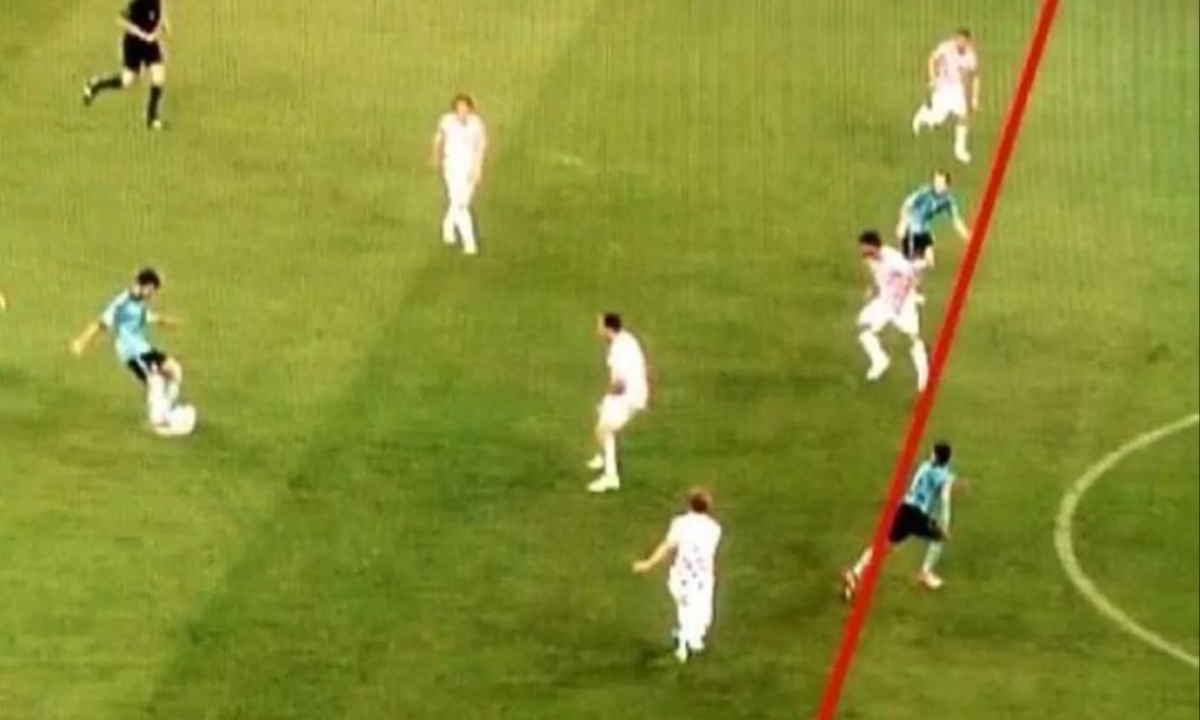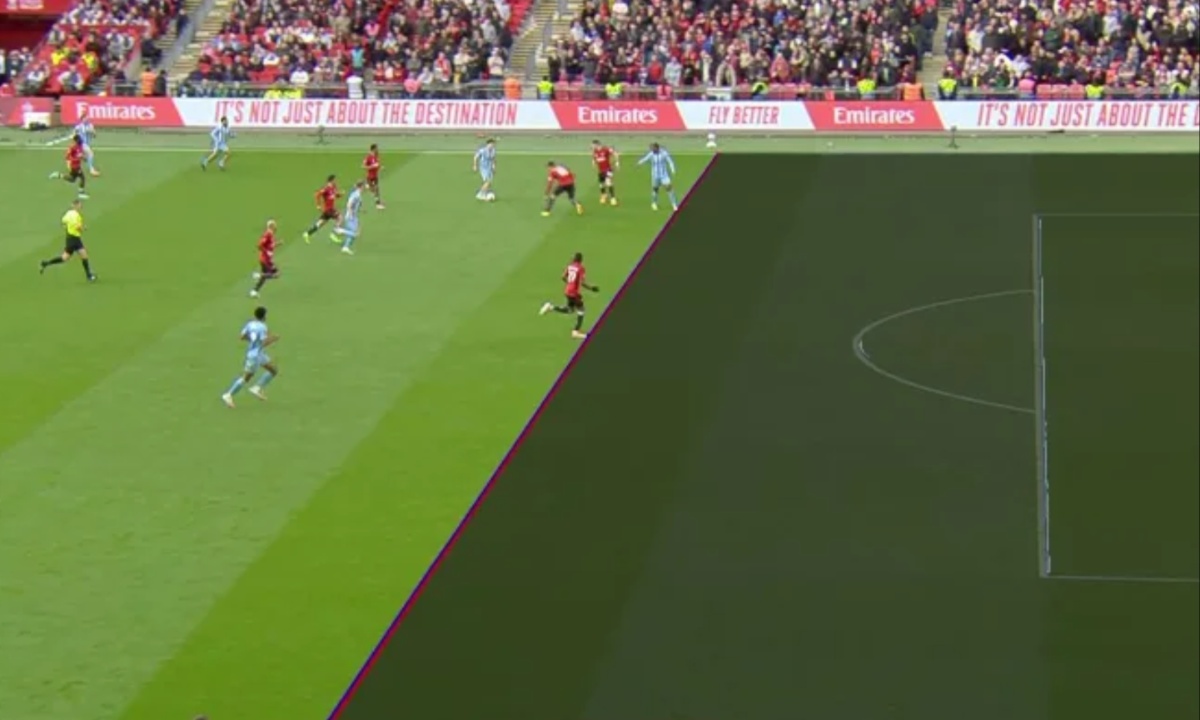The offside rule has been one of the most debated aspects of soccer since its inception in 1863. Initially introduced in England, it penalized forwards who positioned themselves ahead of the ball when receiving a pass. However, the original rule allowed only backward passes, which stifled attacking play. This limitation led to its revision after just three years. Over the decades, the rule has undergone multiple changes, evolving into its current form. Despite these adjustments, it continues to be a source of controversy, particularly in the era of Video Assistant Refereeing (VAR). Now, a radical new proposal spearheaded by Arsène Wenger is poised to redefine the offside rule, potentially reshaping the game in unprecedented ways.
VAR has been a game-changer in modern soccer, enabling referees to make more accurate decisions on offside calls. However, the technology’s precision has also exposed the limitations of the current rule. Goals are frequently disallowed because a player’s toe, shoulder, or even a fraction of their body is deemed offside. These marginal calls, while technically correct, often feel unfair and disrupt the flow of the game. Semi-automated offside technology, recently introduced in international tournaments, has further emphasized the razor-thin margins by which players are judged. While these tools have increased fairness, they have also intensified debates over the rule’s application, highlighting the need for reform.

Arsène Wenger’s Revolutionary Proposal
Arsène Wenger, the former Arsenal manager and FIFA’s Chief of Global Football Development, has proposed a groundbreaking revision to the offside rule. Known as the “Wenger Law,” this new rule suggests that a player should only be considered offside if their entire body is ahead of the last defender. Unlike the current rule, which penalizes even the smallest part of a player’s body being offside, Wenger’s proposal offers attackers more leeway. This adjustment aims to reduce the frequency of marginal offside calls, promote attacking play, and make the game more entertaining for fans.
Under the existing rule, a player is offside if any part of their body that can legally touch the ball is closer to the opponent’s goal than the ball and the second-last defender when the ball is played. This stringent interpretation has led to numerous disallowed goals, often by margins too small to perceive without technology.
The proposed rule changes the dynamics significantly. A player would only be offside if their entire body is ahead of the last defender. This means that as long as any part of their body overlaps or is level with the defender, they are considered onside. This shift would drastically reduce the number of marginal offside decisions, allowing for a more free-flowing and attacking style of play.
The Wenger Law would have profound implications for defensive tactics. Currently, teams often rely on high defensive lines to catch attackers offside. With the new rule, such strategies would become riskier, as attackers would have more room to position themselves advantageously without fear of being offside. This could force defenders to adopt deeper lines, staying closer to their goalkeeper to minimize the space behind them.
Defensive systems that emphasize pressing high up the pitch would also face challenges. Playing with a high line would become dangerous, especially against teams with fast forwards adept at exploiting space. Coaches would need to rethink their defensive strategies, balancing the need to press effectively with the risk of conceding goals due to the increased freedom for attackers.

Boosting Attacking Play and Scoring Opportunities
One of the most exciting aspects of the proposed rule is its potential to increase goal-scoring opportunities. By allowing attackers more freedom to position themselves without fear of marginal offside calls, matches are likely to see a rise in goals. Currently, games average around 2.5 to 3 goals. With the Wenger Law, this figure could climb to 3.5 or even 4 goals per match.
Midfielders and playmakers would also benefit, as they would have greater success with through passes and creative plays. Strikers could make more daring runs behind the defense, knowing that the chances of their goals being disallowed for offside are reduced. This change would likely make soccer more entertaining for fans, aligning with FIFA’s broader vision of making the game more dynamic and engaging.
Several notable incidents illustrate how the new rule could have altered the outcomes of matches. In the 2014/15 El Clásico between Real Madrid and Barcelona, Gareth Bale’s goal was disallowed due to Cristiano Ronaldo being marginally offside in the buildup. Similarly, in the 2022/23 edition of the same fixture, Marco Asensio’s late goal was ruled out for being half a body ahead of the last defender, denying Real Madrid a potential victory.
Another infamous example is Mario Yepes’ disallowed goal for Colombia against Brazil in the 2014 World Cup. Despite appearing level with the last defender during the buildup, Yepes was ruled offside, nullifying what could have been a crucial equalizer. Under the proposed rule, all these goals would have stood, showcasing how the Wenger Law could change the sport’s history.
Challenges and Criticisms
Despite its potential benefits, the new rule is not without its drawbacks. Critics argue that it merely shifts the point of contention rather than eliminating it. Instead of debating whether a player’s toe or shoulder was offside, referees and VAR would now focus on whether the entire body was ahead of the defender. This could lead to similar controversies, albeit with different criteria.
Defenders are likely to face greater challenges, as they would need to adapt to a more permissive offside rule. The increased difficulty of maintaining a cohesive defensive line could lead to more mistakes and vulnerabilities. Additionally, some purists worry that the change might compromise the balance between attack and defense, fundamentally altering the nature of the game.
The International Football Association Board (IFAB) is set to discuss the proposed rule change in February 2025. Trials are already underway in lower-tier leagues in countries like Italy and Sweden, with data being collected to assess the rule’s impact on gameplay. If approved, the rule is expected to follow a phased implementation, similar to the rollout of VAR.
Youth and lower-division tournaments would likely adopt the rule first, allowing players, coaches, and officials to adapt before it is introduced at the elite level. This gradual approach ensures that any unforeseen consequences can be addressed before the rule is applied universally.
The Wenger Law represents a bold attempt to address longstanding issues with the offside rule. Reducing the frequency of marginal calls and promoting attacking play, has the potential to make soccer more exciting and enjoyable for fans. However, it also introduces new challenges, particularly for defenders and referees, who must adapt to the revised criteria.
Soccer has a history of successfully adapting to rule changes, from the major revision of the offside rule in 1925 to the introduction of VAR in 2018. While the Wenger Law is still in its experimental stages, its potential to reshape the game is undeniable. Whether it ultimately enhances the sport or creates new controversies remains to be seen, but one thing is certain: if implemented, this rule will mark a new era in soccer history.
